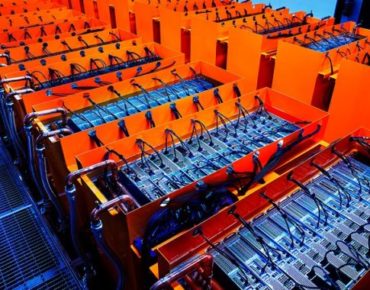Massive, ‘Geophysically Configured’ Oil & Gas Supercomputer Coming On Line in Houston

Based on some news stories in circulation, one might get the impression that the next system to take No. 1 on the Top500 list could be an industrial oil and gas monster, which would be a first for a commercial HPC system. But at a spec’d 250 single-precision petaflops, No. 1 is out of the reach of the new cloud supercomputer being built in Houston by Australia’s DownUnder GeoSolutions (DUG). Still, it’s impressive and another proof point that energy companies are out in front of the commercial HPC pack.
DUG announced yesterday it is leasing 15MW of capacity on Skybox’s Houston campus to power a cloud service custom-tailored to the geophysics community. The service, called DUG McCloud, will be backed by a “geophysically-configured supercomputer,” spanning more than 40,000 servers, which in aggregate will deliver 250 theoretical single-precision petaflops of performance. The deal represents the largest colocation datacenter transaction in Houston’s history.
“DUG McCloud will provide enormous compute capacity and high-performance storage for DUG’s service business,” said DUG’s Managing Director, Dr. Matthew Lamont in a blog post. “It will further enable delivery of high-frequency FWI and RTM in addition to other high-end and compute-intensive algorithms.”
DUG indicated the cloud service will provide clients with access to DUG’s proprietary software, with the option of source code, to accelerate research, development, and production. Lament commented, “They can use our existing solutions, or modify them, or replace them completely. Of course, always owning their own IP.”
Instead of using refrigeration and fans to keep the servers at operating temperature, DUG’s custom cooling system submerges the HPC hardware in purpose-built tanks filled with polyalphaolefin dialectric fluid. The benefit is 45 percent lower energy usage over traditional air-cooled systems, according to DUG, who designed the facility to have a PUE metric of less than 1.05.
“We like to call it the greenest cloud service in the world,” said Lamont of the new Houston facility. DUG Cool datacenters in Perth, London, Kuala Lumpur, and a separate Houston site, have also achieved the 1.05 PUE mark, according to DUG.
DUG’s HPC infrastructure will be housed at Skybox’s 20-acre Houston campus inside its LEED Gold datacenter. Construction and installation have already commenced and the facility is due for completion in February 2019. System details have yet to be disclosed, but depending on double-precision oomph, there could be some impressive Top500 bragging rights. So far, however, the company has not been publicly listed on the Top500 despite seemingly having the flops for it.
Company literature notes the 2014 installation of an Intel Xeon Phi-based system at DUG’s other Houston datacenter, capable of 6 petaflops of single-precision compute power. (For reference the cutoff for the June 2015 Top500 list was 164.6 teraflops–double-precision Linpack.) That system, dubbed “Bubba,” is on track for an upgrade that will raise its capacity to 120 petaflops (single-precision) this year, according to DUG. The company also states its Perth computer, known as “Bruce,” is the largest supercomputer in Australia with 5 (single-precision) petaflops capacity. According to the official record, however, that honor is held by Raijin, the 1.7 petaflops (Linpack) system operated by the National Computational Infrastructure National Facility (NCI-NF) at the Australian National University in Canberra.
Ahead of DUG McCloud’s scheduled launch in Q2 of next year, DUG has already stated its intention to expand capacity four-fold into exascale territory (yes, single-precision) and said there is enough space and power to support that growth.
Related
With over a decade’s experience covering the HPC space, Tiffany Trader is one of the preeminent voices reporting on advanced scale computing today.










